 |
Intel NAS Performance Test Toolkit:
This synthetic NAS benchmark network tool has been around for a while and thou no longer supported by Intel is still used today as a measuring stick for what a particular NAS device can do in pseudo real world situations. In this test, I limited the host system to 2GB using the advanced settings in msconfig to ensure that the test results were not skewed by large amounts of DRAM installed. Additionally, I chose to go a different way than other sites while performing these benchmarks, as I wasn’t just concerned about raw performance, but also dependability and performance when the unit was in a potential degraded state. All too often is the case that reviewers and consumers get too focused on what a particular unit can do in a “perfect” world, but neglect some of the “what if’s” life likes to hand us from time to time. I suspect anyone looking at a 4+ drive bay NAS device is not only purchasing it for performance, but also for redundancy (aka redundant RAID configurations) for added protection. Therefore, I decided not only would I run these benchmarks when everything was normal, but I also intentionally fail redundant RAID types and record the performance while the system was in a degraded state (missing a member) and while it was rebuilding. If you ever lose a drive, it is important to understand what changes to performance should be expected while your system is in a degraded state, as some applications and use cases are more performance sensitive than others. Also, it’s equally important to ensure that it handles these failures as gracefully as possible with no interruption in service. Since the EonNAS is targeted for SMB customers, I believe testing the device in this manner is not only prudent, but relevant. It is important to note, this testing methodology isn’t shared by many other review sites, so from a comparative standpoint, I would caution you from not making any knee jerk conclusions. Any device capable of RAID is going to have similar challenges and similar impacts to function and performance; these are not unique to Infortrend products.
HD Video Playback:
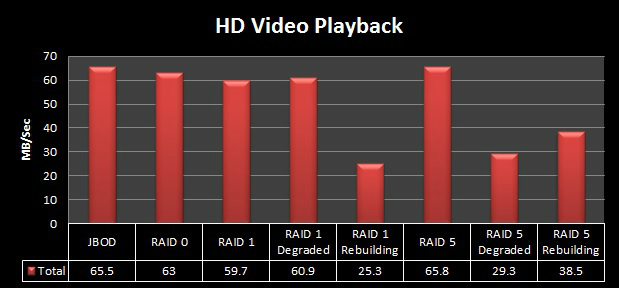 |
2x HD Playback:
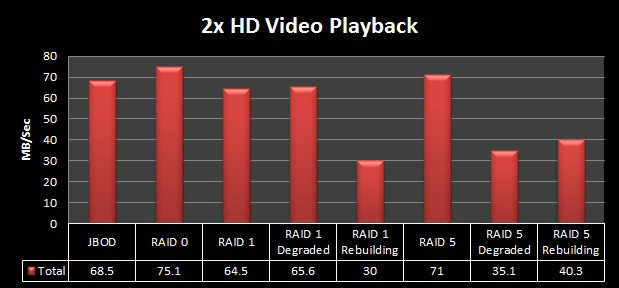 |
4x HD Playback:
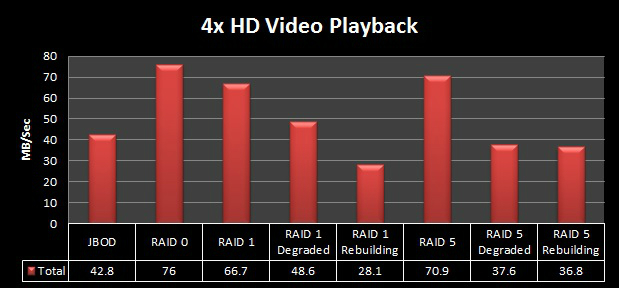 |
HD Video Record:
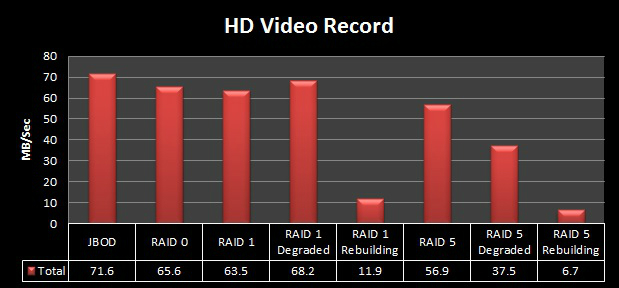 |
HD Playback and Record:
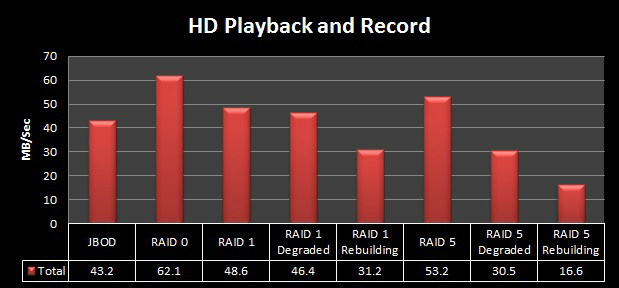 |
Content Creation:
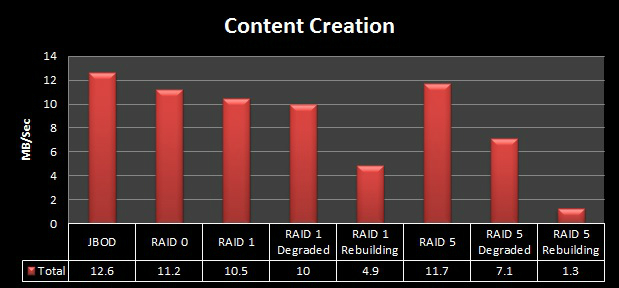 |
Office Productivity:
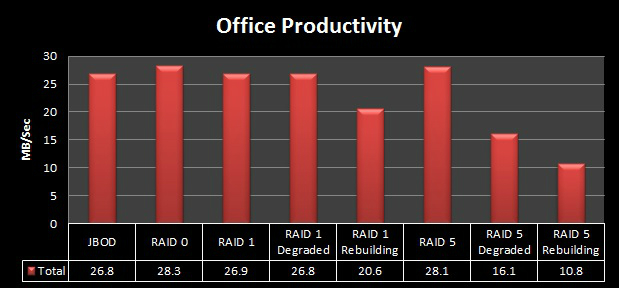 |
File Copy to NAS:
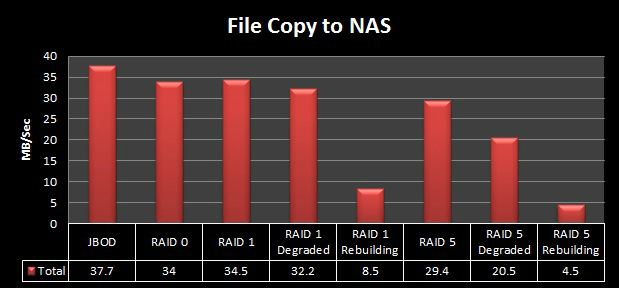 |
File Copy from NAS:
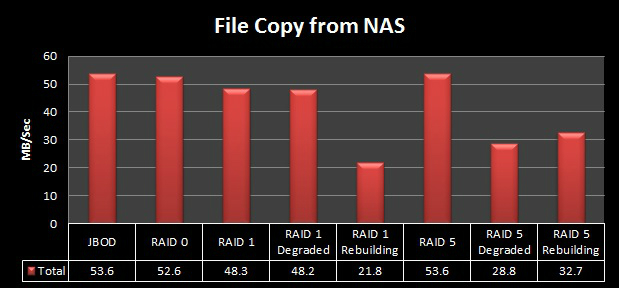 |
Directory Copy to NAS:
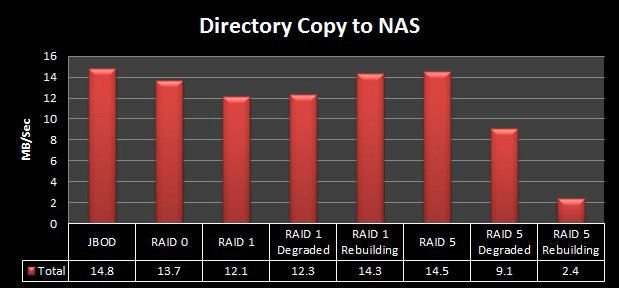 |
Directory Copy from NAS:
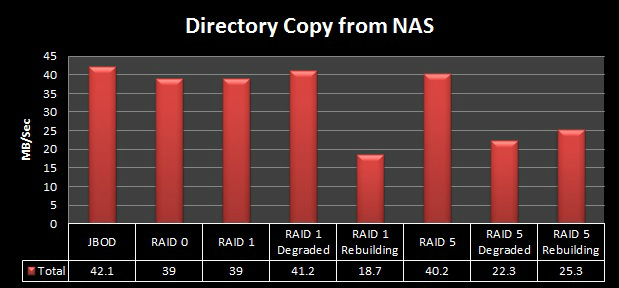 |
Photo Album:
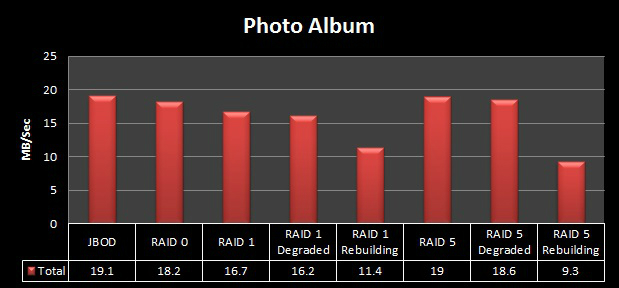 |
All in all, the impact to the performance for redundant pools in either a degraded or rebuilding state was expected. When the system is in this state, the CPU has to perform additional tasks to either rebuild a replacement drive or recreate data from parity. It is here that the EonNAS Pro 510 shows a chink in its armor being only equipped with an Atom processor. Obviously the EonNAS Pro 510 is priced accordingly, given it’s hardware specifications, and I would expect any NAS device similarly equipped to suffer the same impact. However, it is important to note that the EonNAS Pro 510 handled each failure flawlessly maintaining open data transfers during the failure, sounding an audible buzzer alerting that a failure has occurred, and ultimately rebuilding each degraded RAID pool surprisingly fast (1TB RAID 1 and 2TB RAID 5 both rebuilt in less then 3 hours). The extremely impressive rebuild times means that any performance impact due to a loss of a drive in a redundant pool should be minimal, assuming a failed drive is replaced immediately. A little forethought by the user in ensuring that a hotspare is available and pre-configured, will also ensure that a rebuild begins immediately following a drive failure.
There were a couple items worth of note, that I would like to see Infortrend improve upon when it comes to RAID pools in a degraded or rebuilding state. First, there is no percentage indicator available showing the rebuilt progress in the UI, all that is available are events signifying a rebuild has begun and completed. Second, there is no indication that a pool is rebuilding, only degraded on the home screen, you have to drill into the pool menu to see this noted.

[…] Infortrend EonNAS Pro 510 Review @ TechwareLabs […]
[…] Infortrend EonNAS Pro 510 Review @ TechwareLabs […]
[…] Infortrend EonNAS Pro 510 Review @ TechwareLabs […]
[…] Infortrend EonNAS Pro 510 Review @ TechwareLabs […]